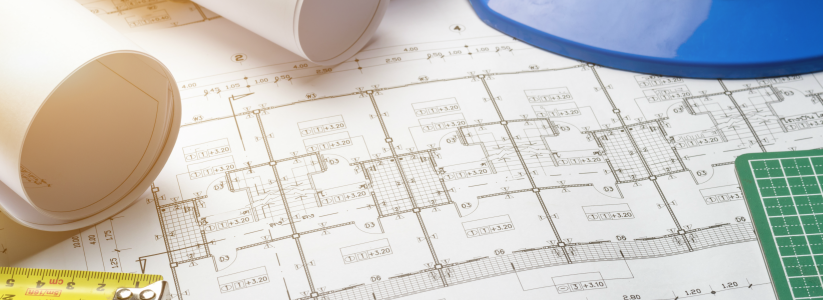To measure and manage the heat network efficiency, the installation of appropriate metering needs to be considered and implemented. Metering needs to be of the right type, installed in the right place and provide accurate, reliable data. And, to be effective, you need an airtight metering strategy.

“If you cannot measure it, you cannot improve it” is a phrase we use a lot at Switch2; established by Physicist Lord Kelvin in the late 1800’s. To an extent, the same message can be equally applied to heat networks: Unless you understand how and where heat energy is being used, you won’t know whether it is being used effectively, efficiently and is not being wasted.
Why must we get metering right?
The benefits of installing heat meters are commonly overlooked and are not as well emphasised, unlike the use of standard utility meters. Heat meters are not just about compliance with legislation and regulations; they are used to monitor and record essential data (flow rates, temperatures, etc.), not only for the recovery of energy costs, but also for data analysis, highlighting any inefficiencies so that actions can be taken to optimise system operation, and reduce energy waste and customers’ carbon footprints.
The installation of a well-designed metering system will also be of benefit when it comes to dealing with any future issues raised.
It leads to greater transparency for the end customer: showing them that they are being charged more fairly, improving their confidence in the system while enhancing the reputation of the heat supplier or network operator. In most cases, customers can be shown how to monitor heat meters regularly, meters which have been strategically positioned within their property’s heating system, and to control their energy consumption.
Who needs to be involved?
If you’re responsible for developing a metering strategy, it’s recommended that advice is sought from important decision-makers, such as:
- Designers: The system design needs to be carried out as early as possible. If meters are considered late in the process, the design is often compromised, with the wrong type of meter specified, incorrectly or poorly installed, and in the wrong locations.
- Financial personnel: Data collection needs to be suitable for finance departments to be able to accurately bill/charge the end customer.
- System operators/maintainers: Metering data is essential for the O&M parties involved in managing the efficient production and distribution of heat. Their input is important to highlight their previous experiences and any perceived problems related to the design.
-
Housing managers/customers: Ultimately, it is the customer who is paying for the heat, so involving them or their representatives in the design phase might help to engage with them, especially when it comes down to influencing behavioural changes associated with levels of building comfort and energy use.
What should be included in your metering strategy?
Each metering strategy should include valuable information to help substantiate operational aspects of the network. The objective is to present a clear and detailed proposal of the metering that will be installed, and how it will be connected for data collection and management.
1. Sufficient metering
Heat meters need to be installed at the meter points and the right places, to measure both the energy supplied into the network and the energy used by each customer or by centralised heating equipment. The level of system metering needs to be agreed. The further the system is broken down into smaller subsystems, with each separately metered - often referred to as submetering - the better the operational control of each subsystem, and the better the cumulative efficiency of the total network.
2. Effective metering equipment
Heat meters must be correctly specified. They need to be reliable and from a reputable supplier, with MID approvals in place, and installed as per the supplier’s recommendations. Heat meters that stop working present problems for all, but certainly become an issue for customers who regularly check their readings. They need to be accurate, providing data that can be used both to generate energy bills and to monitor how well a network is running.
3. Essential data collection strategy
Probably the biggest challenge is getting the meter readings. The proposed system needs to collect and report essential meter reading data so that it can be analysed comprehensively. Think about: How many times do you want to collect the meter readings? What are you going to use the reading for? Which AMR (Automatic Meter Reading) is suitable for you purposes? These are all questions that need to be considered.
Often it is not possible to read all the meters all the time so you should decide what is an acceptable level of service. Daily reads are good for billing purposes, but you may also want to read the meters on an hourly or half hourly basis, then you can analyse the system at high and low demand periods. The types of Automatic Meter Reading (AMR) system, frequency of reading meters and how this data can benefit community heating is a topic that we will address in a future blog.
4. System details - understanding the metering strategy
A clear, fully encompassing metering schematic, including a detailed meter point schedule, will show all stakeholders what is proposed in a clear and easy to understand format. Meter points is a concept that is underused, introduced into the primary gas and electricity industry 15 years ago prior to deregulation, the meter point defines where a meter is needed and what it is for. Each meter point is identified and given a meter point reference.
Key takeaways
- It is essential that system and subsystem metering is used to monitor energy use and recover energy costs.
- Heat meters need to be of the right type, installed in the right places and installed correctly.
- Automated meter reading systems are highly recommended to achieve real-time operation and better control.
- All parties need to be on board when reviewing and discussing the details of the proposals.
- Make sure the final heat metering strategy is clear and fit for purpose.
Subscribe to our blogs for more information on metering and how to maximise the benefit for community heating.



